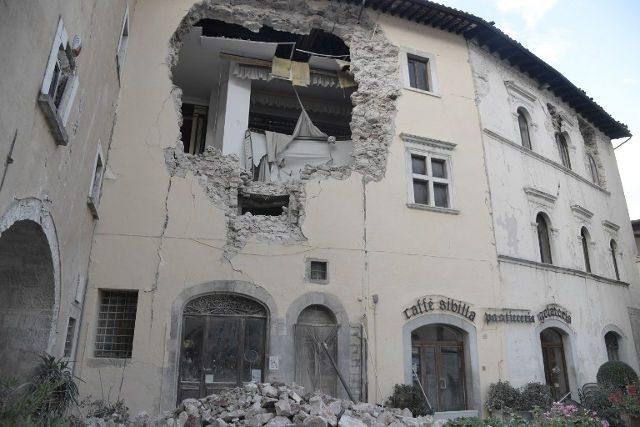SUMMARY
This is AI generated summarization, which may have errors. For context, always refer to the full article.

ROME, Italy – The powerful tremors which shook central Italy on Wednesday, October 26, were the product of a new earthquake rather than aftershocks from one that devastated the town of Amatrice in August, Italian experts say.
“It wasn’t an aftershock, it was a new earthquake,” Mario Tozzi of the national institute for environmental geology and geo-engineering (IGAG) told the Agence France-Presse.
“What we do not know is whether it was a dormant section of the Amatrice fault or a parallel structure, a close cousin of this fault,” he added.
Tozzi said Wednesday’s ‘double-hit’ quake, in which an initial tremor of 5.5 magnitude was followed by one of 6.1, was typical of the central Appenine mountains.
He recalled the 1997 Assisi earthquake in which four workers were killed when a second shock struck while they inspecting buildings damaged the previous day.
“In the coming months we can expect a series of after shocks but they should get progressively weaker,” Tozzi said, while stressing it was impossible to rule out another major quake in the short term.
Much of Italy’s land mass and some of its surrounding waters are prone to seismic activity with the highest risk concentrated along its mountainous central spine.
Nearly 300 died in the Amatrice disaster in August and just over 300 perished when a quake struck near the city of L’Aquila in 2009.
In 1980 tremors near Naples left 3,000 dead and an estimated 95,000 in the 1908 Messina disaster, when a quake in the waters between mainland Italy and Sicily sent massive waves crashing into both coasts.
Italy straddles the Eurasian and African tectonic plates, making it vulnerable to seismic activity when they move.
The movement of the plates is slowly pushing the country northwards at a rate which, experts predict, could result in it becoming attached to what is now Croatia in around 20 million years time. – Rappler.com
Add a comment
How does this make you feel?
There are no comments yet. Add your comment to start the conversation.